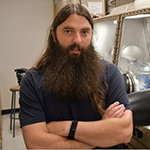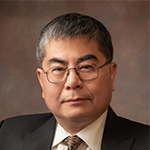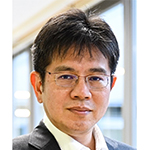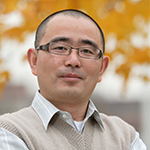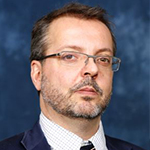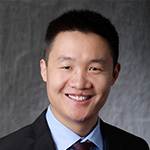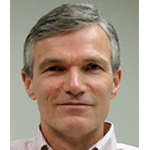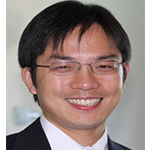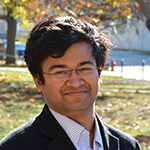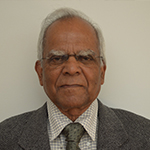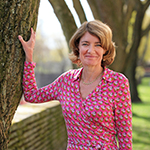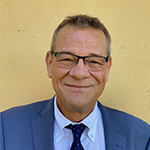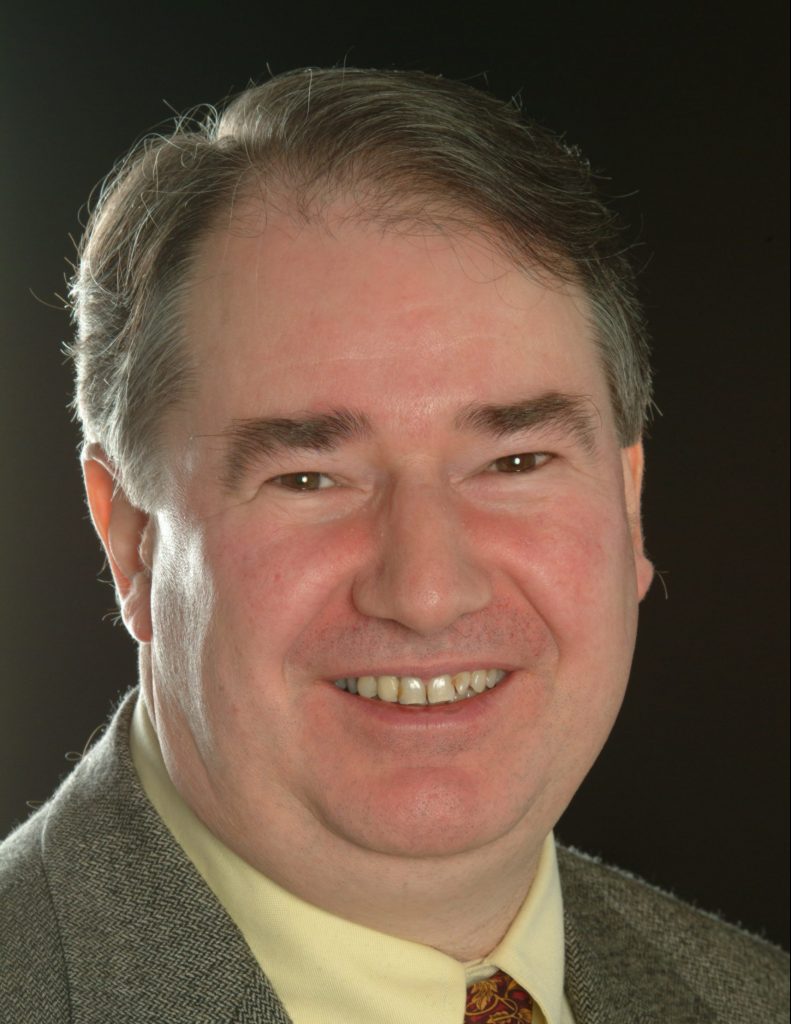Battery Division Early Career Award Sponsored by Neware Technology Limited
Design, Synthesis, and Characterization of Cathode Microstructures in Lithium Batteries
by Feng Lin
Feng Lin is an Associate Professor of Chemistry at Virginia Tech. His research covers the design and synthesis, processing, characterization, and applications of energy materials in electrochemical systems, including batteries, catalysis, and smart windows. His research team has also established an integral analytical program to study materials dynamics under operating conditions using operando synchrotron X-ray and electron analytical techniques.
Prof. Lin holds a BS in Materials Science and Engineering from Tianjin University (2009) and PhD in Materials Science from the Colorado School of Mines (2012) with joint research at the National Renewable Energy Laboratory. Before joining Virginia Tech in 2016, Prof. Lin worked at QuantumScape Corporation as a senior member, and at Lawrence Berkeley National Laboratory as a Postdoctoral Fellow. His awards and recognitions include SLAC Spicer Young Investigator; Ralph E. Powe Junior Faculty Enhancement Award; Journal of Materials Chemistry Emerging Investigator; RCSA Scialog Fellow; American Chemical Society Petroleum Research Foundation Doctoral New Investigator; Energy Storage Materials Young Scientist Award; National Science Foundation CAREER award; John C. Schug Faculty Research Award; ECS Battery Division Early Career Award; and Scientific Highlights by the US Department of Energy National Laboratories.
Battery Division Postdoctoral Associate Research Award Sponsored by MTI Corporation and the Jiang Family Foundation
Thermal Runaway Modeling of Li-ion Batteries – From Fundamental Modeling to Real-Life Applications
by Paul Coman
Paul Coman is a Research Assistant Professor in the Department of Chemistry at the University of South Carolina. His research focuses on developing mathematical modeling for improving the performance and safety of Li-ion batteries. Prior to his current position, Prof. Coman was a Postdoctoral Fellow at the same university in Ralph E. White’s group, working with various Li-ion battery projects—from modeling of thermal runaway to performance studies, aging and thermal modeling, and design of battery packs, in collaboration with Eric C. Darcy from NASA Johnson Space Center. Prof. Coman graduated with his PhD from the Syddansk Universitet after completing a BS at the Universitatea Tehnică „Gheorghe Asachi” din Iași and MS at Syddansk Universitet. He has worked on modeling Li-ion batteries since 2013.
Battery Division Postdoctoral Associate Research Award Sponsored by MTI Corporation and the Jiang Family Foundation
3D Printing of Batteries: Fiction or Reality?
by Alexis Maurel
Alexis Maurel is a Fulbright Postdoctoral Researcher in the Aerospace and Mechanical Engineering Department at the University of Texas at El Paso (UTEP). Dr. Maurel received the 2021 Fulbright France Research Fellowship to pursue his research at UTEP with Eric MacDonald (Mechanical Engineering) and Sreeprasad Sreenivasan (Chemistry Department). His research takes place at the ESTRELLA lab (Energy SToRage and ELectronics 3D Printing Laboratory) where he works on additive manufacturing of lithium- and sodium-ion batteries via material extrusion and vat photopolymerization, in close collaboration with his former PhD advisors, Sandia and Oak Ridge National Laboratories, Youngstown State University, and the National Aeronautics and Space Administration (NASA). His current work is dedicated to 3D printing of batteries from lunar and Martian regolith.
Dr. Maurel received a two-year diploma in Chemical Engineering in 2014, followed by his BS in Materials Chemistry in 2015 from Université Paul Sabatier. His research then focused on wastewater recycling in Mexico. In 2017, Dr. Maurel received his MS in Materials for Energy Storage and Conversion from a joint Erasmus Mundus program with Politechnika Warszawska, Universidad de Córdoba, Université Paul Sabatier Toulouse, and Université de Picardie Jules Verne (UPJV). He completed his PhD in Materials Chemistry in 2020 at UPJV, researching battery 3D printing under the supervision of Loic Dupont, Sylvie Grugeon, and Stéphane Panier, in collaboration with Michel Armand. For this work, he received the Best PhD Thesis Prize.
Battery Division Research Award
A New Perspective on Layered Transition Metal Oxides as Cathode Active Materials
by Bor Yann Liaw
Boryann Liaw is a Directorate Fellow at Idaho National Laboratory (INL). Since the early 1990s, Dr. Liaw has conducted laboratory and real-life battery and vehicle testing, data collection and analysis, battery modeling and simulation, battery performance and life prediction, battery fast charging technology development, and battery failure mode and effect analyses.
Dr. Liaw received his BS in Chemistry from National Tsinghua University, his MS in Chemistry from University of Georgia, and PhD in Materials Science and Engineering from Stanford University. He was a faculty member at University of Hawaiʻi at Mānoa for more than 27 years, co-founder of Ambient Micro, and founder of High Power Research Laboratory. He joined INL in May 2016 as Department Manager of Energy Storage and Advanced Vehicles. A Fellow of the Electrochemical Society, Dr. Liaw has actively served in Society leadership roles on several journal editorial boards, executive boards, and associate editorships. He is a Past President of the International Battery Materials Association and serves as scientific advisor to several international and national programs, including the Department of Energy’s Energy Frontier Research Center at Stony Brook University. His recent accolades include the IBA Technology Award (2020) and Asian American Engineer of the Year (2019).
Battery Division Research Award
Structure-Property Relationships: A Journey from LFP to Lithium Metal
by Atsuo Yamada
Atsuo Yamada is Professor at the University of Tokyo. His research, focused on battery materials, is particularly recognized for sophisticated approaches to structure-property relationships, including very early stage exploration/optimization of LFP and more recently, identification and understanding of several functional electrolytes.
Prof. Yamada’s career spans academic and industrial research. After serving as a Laboratory Head at the Sony Research Center, in 2002 he was appointed as Associate Professor at the Tokyo Institute of Technology, and then, in 2009, Full Professor at the University of Tokyo. Prof. Yamada spent a year as Visiting Scholar in John B. Goodenough’s lab at the University of Texas at Austin. On a sabbatical as Invited Professor at the Université de Bordeaux, he worked on enhancing research communication with Dr. Claude Delmas at the Institut de Chimie de la Matière Condensée de Bordeaux, a Joint Research Unit of the university and the Centre national de la recherche scientifique and the Institut Polytechnique de Bordeaux. Over the last decade, Prof. Yamada has led important Japanese national research programs: Elements Strategy Initiative for Catalysts and Batteries, Specially Promoted Research, Core Research for Evolutional Science and Technology, and Data Creation and Utilization Type Materials Research and Development Project. He now serves on the Advanced Energy Materials Scientific Advisory Board.
Among his many honors, Prof. Yamada received the American Ceramic Society Spriggs Award and Purdy Award, ECS Japan Scientific Achievement Award, and International Battery Association Research Award. He holds 90 patents, published 25 chapters and well over 260 refereed journal papers with over 28,000 citations, delivered 125 plenary/keynote/invited presentations, and ranked as a Clarivate Analytics Highly Cited Researcher.
Battery Division Student Research Award Sponsored by Mercedes-Benz Research & Development
Energy Storage with the Abundant Divalent Metal Batteries
by Singyuk Hou
Singyuk Hou’s academic career has revolved around the research of electrolytes and interfaces for metal anodes. After completing her BS and MS in Chemistry, she started her PhD under the supervision of Prof. Chunsheng Wang at the University of Maryland, College Park. Her PhD research focuses on the molecule-level control of the solvation structure using chelants that promote the charge transfer kinetics of magnesium and calcium metal batteries. It also extends to SEI engineering for high-energy lithium ion and lithium metal batteries by developing novel electrolyte systems. She published over 50 peer-reviewed papers and co-authored four patents.
Battery Division Student Research Award Sponsored by Mercedes-Benz Research & Development
The Role of Ion Solvation in Reduced Temperature Li Metal Batteries
by John Holoubek
John Holoubek is a PhD candidate and NASA Graduate Fellow at the University of California, San Diego under the supervision of Professors Zheng Chen and Ping Liu. He works on understanding the impact of electrolyte chemistry and structure on battery performance, primarily at reduced temperatures. This research integrates experimental investigation and computational modeling connect variance in electrochemical behavior to molecular phenomena at the electrode/electrolyte interphase. The primary technological motivation is to improve the kinetic behavior of high-energy battery chemistries with an emphasis on the Li metal anode. Holoubek has also contributed to research in lithium ion, aqueous, and dual-ion batteries.
Battery Division Technology Award
Understanding Metals’ Roles in Layered Structure Oxides for High-Energy Lithium-ion Batteries
by Jun Lu
Jun Lu is a Scientist at Argonne National Laboratory. His research focuses on solving some of the world’s most challenging rechargeable Li-ion battery (LIB) and next generation Li battery problems. Over the past 10 years, he pioneered and led research on novel cationic and anionic redox (CAR) materials for high energy density LIBs, Li-O2 and Li-S batteries.
Dr. Lu has published more than 430 papers in journals including Journal of The Electrochemical Society, Nature, Science, Nature Energy, Nature Nanotechnology, Nature Review Materials, Nature Communications, Chemical Reviews, Journal of the American Chemical Society, and Proceedings of the National Academy of Sciences. He has over 45,000 citations with an h-index of 117. He ranked as a Clarivate Analytics Global Highly Cited Researchers from 2018−2021. Dr. Lu filed more than 20 patents and patent applications. He received the 2022 IBA Research Award (2022); 2020 IBA Early Career Award; 2019 R&D 100 Award; 2019 American Chemical Society Division of Energy & Fuels Emerging Researcher Award; 2018 Rising Star Award for Argonne Commercialization Excellence; 2016 International Automotive Lithium Battery Young Investigator Award; 2016 International Academy of Electrochemical Energy Science Award for Research Excellence in Electrochemistry Energy; and 2016 BASF and Volkswagen international Science Award Electrochemistry.
Corrosion Division H. H. Uhlig Award
The Journey from Numerical Simulations to Impedance Analysis
by Mark Orazem
Mark Orazem is a Distinguished Professor and the Dr. and Mrs. Frederick C. Edie Professor in the Department of Chemical Engineering at the University of Florida (UF). He obtained his BS and MS degrees from Kansas State University and PhD in 1983 from the University of California, Berkeley. In 1983, he began his career as an Assistant Professor at the University of Virginia, and in 1988, joined the UF faculty. He received numerous UF term professorships and teaching awards and was recognized as a University of Florida Foundation Preeminence Professor. Prof. Orazem is a Fellow of The Electrochemical Society and the International Society of Electrochemistry (ISE), and served as ISE President in 2011-2013. He has over 220 refereed publications. Prof. Orazem co-authored, with Bernard Tribollet of the Centre nationale de la recherche scientifique (CNRS), Electrochemical Impedance Spectroscopy published by Wiley in 2008. Chemical Industry Press published the textbook’s Chinese translation in 2014. The second edition appeared in 2017 with the Chinese translation in preparation. Woodhead Publishing published his edited book, Underground Pipeline Corrosion, in 2014. With co-author Bernard Tribollet, Prof. Orazem received the 2019 Claude Gabrielli Award for contributions to electrochemical impedance spectroscopy. Prof. Orazem received the 2012 ECS Henry B. Linford Award.
Corrosion Division Morris Cohen Graduate Student Award
Microscopic Electrochemical Properties of Carbon Steels and Metallurgical Approach for High Corrosion Resistance
by Mariko Kadowaki
Mariko Kadowaki is a Researcher at the National Institute for Materials Science in Japan. She finished her BS in 2016, MS in 2018, and PhD in 2021 in the Department of Materials Science at Tohoku University. During her PhD research, she applied a micro-electrochemical technique to clarify the relationship between the microstructure of carbon steels and pitting corrosion resistance. She also applied first-principles calculations to elucidate the electronic interaction between Fe and interstitial atoms in carbon steels. An active member of The Electrochemical Society, in 2017 she received a 232nd ECS Meeting Student Poster Session Award Honorable Mention. She won the 2021 Japan Society for the Promotion of Science Ikushi Prize as well as a L’Oréal-UNESCO For Women in Science, Japan Fellowship for Materials Science.
Corrosion Division Rusty Award for Mid-Career Excellence
Rust At a Glance: Electrochemical Thermodynamics and Kinetics of Porous Corroding Interfaces
by David Bastidas
David Bastidas is Associate Professor at The University of Akron in the Department of Chemical, Biomolecular, and Corrosion Engineering, and Corrosion Expert at the National Center for Education and Research on Corrosion & Materials Performance. His research focuses on electrochemical thermodynamics, kinetics of corrosion, and inhibition mechanisms. He leads the research lab in Corrosion Protection and Materials Performance.
Prof. Bastidas completed his BSc in Chemical Science and PhD in Material Science and Engineering at the Universitat de Barcelona. He served as Chair of the 2022 Corrosion and Materials Degradation Conference and Trustee of The University of Akron AMPP Section. Prof. Bastidas is the Faculty Advisor of the Corrosion Squad Student Association and received the Outstanding Campus Advisor Award and Outstanding Faculty Engagement Award in 2022. His research has garnered accolades including inaugural winner of the 2022 ECS Corrosion Division Rusty Award for Mid-Career Excellence; inclusion on the 2020 Top Researchers list; 2020 National Corrosion Award of Excellence; and Outstanding Research Career Award I3 Program. Prof. Bastidas authored over 150 publications and presented at a number of invited conferences.
Electrodeposition Division Research Award
Impact of Electrodeposition on the Design and Synthesis of Nanoporous Functional Materials
by Nikolay Dimitrov
Nikolay Dimitrov is a Professor in the Department of Chemistry at The State University of New York (SUNY) at Binghamton. His research interests are in electrodeposition, catalysis, and design and synthesis of functional nanomaterials. Prof. Dimitrov’s basic-science research focuses on understanding morphology and structural evolution upon growth of metals and alloys. His applied research projects emphasize a study of the performance and reliability of structures and devices associated with electronic packaging. Illustrating the outstanding practical value of electrodeposition, these projects prove instrumental for understanding, controlling, and improving the reliability of lead-free solder joints. He also contributed to the design and optimization of approaches for through-hole copper filling for the development of glass interposers applicable in 2.5/3D packaging.
Prof. Dimitrov completed his education (BS/MS from Sofijski universitet and PhD from the Balgarska akademiya na naukite) in 1993. He then held postdoctoral and research faculty appointments at Arizona State University until 2003 when he joined SUNY Binghamton. His multifaceted scholarly activity was recognized by the 2008 NSF CAREER Award and 2020 Distinguished Research Award of the American Chemical Society Binghamton Chapter.
Electrodeposition Division Early Career Investigator Award
Understanding and Controlling Electrodeposition of Li in Solid Electrolytes
by Fudong Han
Fudong Han is the Priti and Mukesh Chatter ’82 Career Development Chair Assistant Professor in the Department of Mechanical, Aerospace, and Nuclear Engineering at Rensselaer Polytechnic Institute. His research focuses on developing advanced materials for electrochemical energy storage, particularly solid state batteries, with the aid of advanced neutron-based characterization techniques.
Prof. Han received his BS in 2009 and his MS in 2012 in Materials Science and Engineering from Shandong University. He completed a PhD in Chemical Engineering in 2018 and a year of postdoctoral research at the University of Maryland, College Park. Prof. Han was a Guest Scientist in the Materials for Energy and Sustainable Development Group at the National Institute of Standard and Technology. He received the 2018 ECS Battery Division Student Research Award and 2017 Materials Research Society Graduate Student Gold Award. His work on battery research has led to two patents and patent applications. Prof. Han is the author of over 70 papers in scientific journals with 12,000 citations and an h-index of 50. He also authored two book chapters on solid state batteries.
Energy Technology Division Walter Van Schalkwijk Award in Sustainable Energy Technology
Low Temperature Water Electrolysis as a Near Term Enabler in Climate Change Mitigation
by Katherine Ayers
Katherine Ayers is Vice President of R&D for Nel Hydrogen US, with responsibility for developing and executing Nel’s technology strategy in proton exchange membrane electrolysis. Dr. Ayers manages a broad portfolio of internally and externally funded research projects, across a range of collaborators in academia, industry, and National Labs. She is also the lead principal investigator on the US Department of Energy benchmarking program, spanning the primary water splitting technologies funded by the Hydrogen and Fuel Cell Technologies Office (HFTO), with the goal of providing protocols and standards for consistency in water splitting research.
Dr. Ayers completed her PhD in Chemistry at the California Institute of Technology working with Nate Lewis, and spent several years in the battery industry before joining Nel in 2007. She served on multiple scientific advisory boards for Energy Frontier Research Centers and similar consortia such as the JCAP Solar Fuels Hub, as well as two Federal level advisory committees for DOE: HTAC (Hydrogen and Fuel Cells Technical Advisory Committee) and BESAC (Basic Energy Sciences Advisory Committee). She received R&D Awards at the 2012 and 2021 DOE Merit Reviews from the HFTO Production Team, and an American Chemical Society Rising Stars Award in 2014 from the Women Chemists Committee. She also received the Fuel Cell Seminar Award in 2015. She became a Fellow of The Electrochemical Society in 2020.
High Temperature Materials Division Outstanding Achievement Award
Mechanisms of Oxide Exsolution and Electrode Applications in Solid Oxide Cells
by Scott A. Barnett
Scott A. Barnett is a Professor in the Materials Science and Engineering Department at Northwestern University (since 1986). His past research topics include semiconductor growth by molecular beam epitaxy, ion-assisted thin film deposition, nitride hard coatings and superlattices, solid oxide fuel cells and electrolyzers, Li-ion battery cathodes, and electrode materials characterization using three-dimensional tomography and impedance spectroscopy. Current research interests include the development and characterization of novel fuel cell electrode materials, energy storage using solid oxide cells and Li-ion batteries, and accelerated testing to characterize cell degradation processes.
After receiving his PhD in Metallurgy from the University of Illinois at Urbana-Champaign in 1982, Prof. Barnett held postdoctoral appointments at the University of Illinois and Linköpings universitet (1983-1986). He has been a Fulbright Guest Professor at Centro Atomico Bariloche (2016), Otto Mønsted Guest Professor at the Danmarks Tekniske Universitet (2013), Cheng Tsang Man Endowed Professor at Nanyang Technological University (2009), and a Visiting Scientist at Los Alamos National Laboratories (1998). Prof. Barnett was founder and Chief Technical Consultant at Functional Coating Technology, LLC (2001-2011) and Applied Thin Films, Inc. (1998-2001). The author or co-author of over 300 publications (h-index of 90), he has 15 patents, and advised nearly 50 PhD students. Prof. Barnett is a Fellow of The Electrochemical Society, AVS, and American Ceramic Society. He was recognized as an Office of Naval Research Young Investigator.
High Temperature Materials Division J.B. Wagner, Jr. Young Investigator Award
Joule Heating Based Ultrafast High-Temperature Sintering for Materials Discovery and Manufacturing
by Liangbing Hu
Liangbing Hu is the Herbert Rabin Distinguished Professor at the University of Maryland, College Park. His research group focuses on materials innovations, device integrations, and manufacturing in general, with ongoing research activities on wood nanotechnologies, 3000 K extreme materials, and beyond Li-ion batteries.
Prof. Hu received his BS in Physics from the University of Science and Technology of China in 2002, where he worked on colossal magnetoresistance (CMR) materials for three years. He completed a PhD at the University of California, Los Angeles (2002–2007), focusing on carbon-nanotube-based nanoelectronics. In 2006, Prof. Hu joined Unidym, Inc. as a co-founding scientist, leading the development of roll-to-roll printed carbon nanotube films and device integration in touch screens, LCDs, flexible OLEDs, and solar cells. During a postdoc at Stanford University from 2009-2011, he researched various energy storage technologies using nanomaterials/nanostructures.
Prof. Hu has published some 400 research papers (including about 10 in Science and Nature). Among the many awards he received are Clarivate Analytics Highly Cited Researcher (2016-2021); Wiley-Small Journal 2019 Young Innovator Award; Blavatnik National Awards Honoree; 2019 TAPPI Nano Middle Career Award; 2019 Exemplary Research Recognition; 2018/2020/2021 R&D 100 Winners; 2018 HIVE 50 Innovator; 2017 Nano Letters Young Investigator Lectureship; 2016 Office of Naval Research Young Investigator Award; 2016 American Chemical Society Division of Energy and Fuel Emerging Investigator Award; 2016 SME Outstanding Young Manufacturing Engineer Award; 2019 and 2014 University of Maryland Invention of the Year; and 2013 Air Force Young Investigator Award.
Industrial Electrochemistry and Electrochemical Engineering Division H. H. Dow Memorial Student Achievement Award
Electrochemically Grown Highly Textured Thick Ceramic Oxide Films for Energy Storage: A New Manufacturing Paradigm for Cathode Materials
by Arghya Patra
Arghya Patra is a PhD candidate and Mavis Future Faculty Fellow in the Department of Materials Science and Engineering at the University of Illinois Urbana-Champaign in Prof. Paul V. Braun’s research group. His thesis research focuses on developing an alternative electrochemical manufacturing route for conventionally used slurry-cast ceramic oxide cathodes for lithium and sodium ion batteries. His work has demonstrated controlled electrochemical growth of dense, highly textured, thick ceramic oxide films important for electrochemical energy storage. He earned a BTech and MTech in Metallurgical and Materials Engineering from the Indian Institute of Technology Kharagpur (2017). His undergraduate research focused on electrodeposition of porous metals as current collectors and tin-based ternary anodes for Li ion batteries.
Luminescence and Display Materials Division Outstanding Achievement Award
Formulation of Radiative and Nonradiative Transitions of a Polyatomic System within Crude Adiabatic Approximation
by Kailash Mishra
Kailash Mishra received his PhD in Physics from Sambalpur University, and completed post-doctoral research at the State University of New York at Albany. In 1985, he joined OSRAM Sylvania Lighting Research Center (then GTE Sylvania) as an Advanced R&D Engineer. Dr. Mishra continued working at OSRAM Sylvania first as Staff Scientist and then as R&D Manager until his retirement in 2017 as the global Head of Technology Scouting. At the Lighting Research Center, Dr. Mishra was engaged in phosphor research for lighting applications.
Since joining ECS in 1998, Mishra has served as Chair of the ECS Luminescence and Display Materials Division, co-organized several ECS symposia, and co-edited multiple volumes of ECS Transactions. He is a Fellow of The Electrochemical Society and served as a Technical Editor of the ECS Journal of Solid State Science and Technology since 2011.
Dr. Mishra’s main research interest is in the theory of electronic structures and associated properties of luminescent materials, and the fundamentals of luminescence. He is one of the early researchers who applied methods of quantum chemistry to study the structure and luminescence properties of materials. Dr. Mishra demonstrated how to obtain a cogent picture of luminescence by applying band structure and cluster molecular orbital methods in a synergetic manner. In recent years, he has engaged in the application of quantum electrodynamics to study various luminescence processes in materials. Dr. Mishra is currently engaged in studying the application of adiabatic approximation to investigate the temperature dependence of radiative and nonradiative processes in solids. He has co-authored more than 130 papers in peer-reviewed journals and has 10 patents.
Physical and Analytical Electrochemistry Division Max Bredig Award in Molten Salt and Ionic Liquid Chemistry
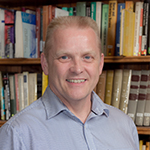 Wednesday 2010h/Room Crystal Ballroom C/D
Wednesday 2010h/Room Crystal Ballroom C/D
Of Ionic Liquids and Hydrogen Bonds
by Tom Welton
Tom Welton is the immediate Past President of the Royal Society of Chemistry. In 2004, he became the world’s first Professor of Sustainable Chemistry at Imperial College London, where he has been a faculty member since 1993. He has worked with ionic liquids continuously since 1985 when he embarked on his PhD on “The Chemistry and Spectroscopy of Ionic Liquids,” supervised by Ken Seddon at the University of Sussex. He investigates the properties of ionic liquids, their interactions with solutes, and their effects on chemical reactions. He is best known for quantifying these effects and providing mechanistic understandings of their use in organic synthesis. Much of his earlier work was on the application of ionic liquids to transition metal catalysed reactions. More recently, he has been interested in the use of ionic liquids for the processing of lignocellulosic biomass. Beyond his own research, he has been Head of the Chemistry Department (2007-2014) and Dean of the Faculty of Natural Sciences (2014-2019) at Imperial College London. He is a champion for greater inclusion of underrepresented groups in chemistry. In 2017, he received the Officer of the Order of the British Empire for his work on diversity in education.
Sensor Division Outstanding Achievement Award
Micro/Nano Sensors and Drug Delivery
by Anja Boisen
Anja Boisen is Head of Section and Professor in the Department of Health Technology at the Danmarks Tekniske Universitet (DTU). She heads IDUN, a Danish National Research Foundation and the Villum Foundation Center of Excellence that conducts research in micro and nano technology. Her research group focuses on the development and application of micro and nano mechanical sensors and microfabricated systems for oral drug delivery. Prof. Boisen co-founded the companies Cantion, Silmeco BluSense Diagnostics, and LightNovo, and is currently heading a research project on therapeutic drug monitoring that should result in a start-up company in a few years’ time.
Prof. Boisen completed an MS in Physics at Roskilde Universitet and PhD at DTU in 1997. After a research period at IBM Almaden and postdoc at DTU, she joined DTU as Associate Professor in 1999 and became a full professor in 2005. Prof. Boisen is a board member of the Leo Foundation, Villum Foundation, Danish Academy of Technical Sciences, and Royal Danish Academy of Sciences. Boisen has an h-index of 62 with over 14,000 citations. Her work has garnered significant recognition. In 2021, she was elected Fellow of The Electrochemical Society and MNE 2021 Fellow at the annual international conference on Micro and Nano Engineering (MNE). In 2020, she was awarded the Order of Dannebrog by Her Majesty the Queen of Denmark. Boisen received the 2013 Danish Council for Independent Research Sapere Aude Top Researcher Award; 2012 Danish Ministry of Research, Innovation and Higher Education EliteForsk Award; and 2008 Villum Kann Rasmussen Award (the largest Danish research prize).
Europe Section Alessandro Volta Medal
The Journey Towards the Large-Scale Commercialization of Low-Cost and High Energy Density Na-ion Batteries
by Jerry Barker
Jerry Barker is co-founder and Chief Scientist at Faradion Limited, a UK-based start-up specializing in Na-ion battery technology. In 2019, Dr. Barker was appointed Honorary Professor within the School of Chemistry at the University of St. Andrews. To target the low-cost and sustainable Li-CAM supply chain, he founded the start-up company, Redoxion Limited, in April 2022.
After completing a PhD in Solid State Electrochemistry at the University of Exeter, Dr. Barker worked at British Petroleum (BP) and spent time at the University of California, Santa Barbara. There he studied alkali ion doped polyacetylene with Nobel Prize laureates Alan Heeger and Hideki Shirakawa. As Chief Electrochemist at BP Solar, Dr. Barker developed a process for the large-scale electrodeposition of II-VI semiconductors for PV applications. He also served as Chief Scientist and Research Director at Valence Technology, Inc.
Dr. Barker is the named inventor on more than 115 issued US patents covering numerous alkali ion active materials as well as the Carbothermal Reduction (CTR) volume manufacturing method. CTR is widely regarded as the benchmark process for the large-scale synthesis of LiFePO4. His inventions have culminated in five commercially successful battery enterprises. Dr. Barker has published extensively (h-index 59, total citations >11,000). In 2012, he received the IBA Technology Award for his contributions to Li-ion battery materials. He has appeared as a patent litigation expert witness in Europe and North America. Currently, Dr. Barker acts as an Expert Panel member for the Faraday Institution and Advisory Board member for Australia’s storEnergy initiative.
Europe Section Alessandro Volta Medal
From the Oil Barrel to Reactive Metals: An Approach to the Energy Transition
by Stefano Passerini
Stefano Passerini is Professor at the Karlsruhe Institute of Technology and Director of the Helmholtz Institute Ulm. His research focuses on the basic understanding and development of materials for high-energy batteries and supercapacitors, with the goal to create sustainable energy storage systems from environmentally friendly and available materials and processes. He is an internationally recognized pioneer in the field of ionic liquids and the development of sodium-ion batteries.
Prof. Passerini received his PhD in Electrochemistry from Sapienza – Università di Roma in 1992. He then worked as a senior scientist at the University of Minnesota and later at ENEA (Italian National Agency for New Technologies, Energy, and Environment). He has been a visiting scientist at Waseda University and the Universidade de São Paulo. Appointed Professor at the Karlsruher Institut für Technologie in 2014, he became Director of the Helmholtz Institut Ulm in 2018.
The co-author of more than 600 scientific papers (h-index 103), a few book chapters, and several international patents, he has been the Editor-in-Chief of the Journal of Power Sources since 2015. His work has been recognized with numerous accolades including Fellow of The Electrochemical Society (2020) and International Society of Electrochemistry (2016). He has been a member of the Leopoldina Academy of Science since 2019. The ECS Battery Division gave him their Research Award in 2012.
Europe Section Heinz Gerischer Award
The Long Reach of Electrochemistry: Semiconductors, Metallization and Energy Storage
by D. Noel Buckley
D. Noel Buckley is Professor Emeritus of Physics at the University of Limerick and Adjunct Professor of Chemical Engineering at Case Western Reserve University. His current research includes electrochemistry at the compound-semiconductor/solution interface; the kinetics of vanadium redox couples on carbon electrodes that are the basis for the vanadium flow battery; and stress in electrodeposited metal nanofilms. He has long been interested in the communication of science. Buckley teaches graduate courses on Scientific Writing and Methodology of Research, and presented short courses on scientific writing at ECS meetings and European Union Innovative Training projects.
Buckley obtained his BS and PhD from the National University of Ireland. His PhD research with the late Prof. Declan Burke was on the oxygen electrochemistry of ruthenium and iridium and led to the discovery of electrochromism in iridium oxides. He subsequently completed postdoctoral research with the late Prof. Wayne Worrell at the University of Pennsylvania before joining Bell Laboratories. There he played a key role in the early development of compound semiconductor science and technology, in recognition of which he received the ECS Electronics and Photonics Division Award in 2017.
A Past President and Fellow of The Electrochemical Society, Buckley served as Associate Editor of the Journal of The Electrochemical Society and Electrochemical and Solid State Letters, and a member of the Editorial Advisory Board of ECS Transactions. He has been Chair of the ECS Europe Section, and Chair, Secretary, and Treasurer of the Electronics and Photonics division.







